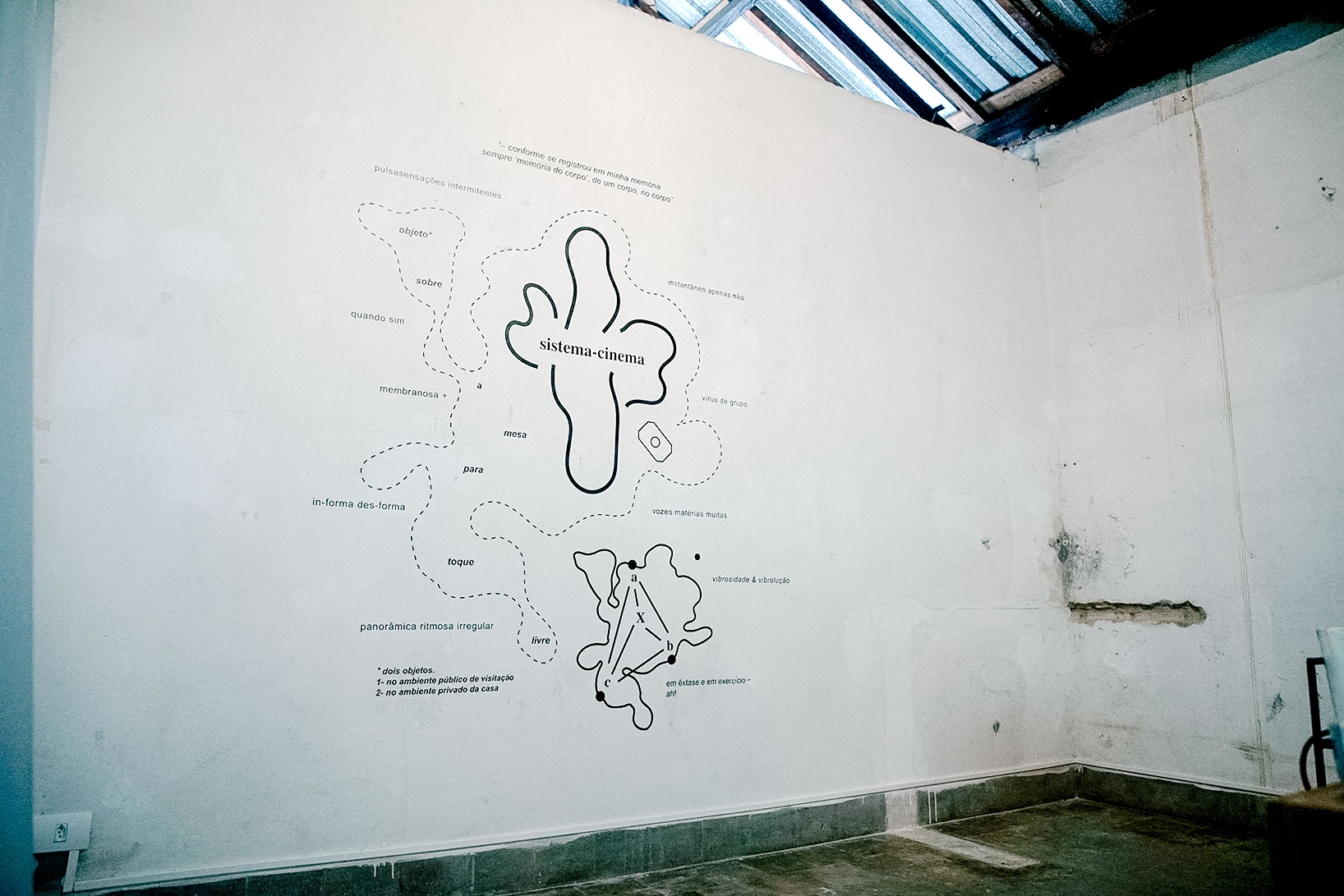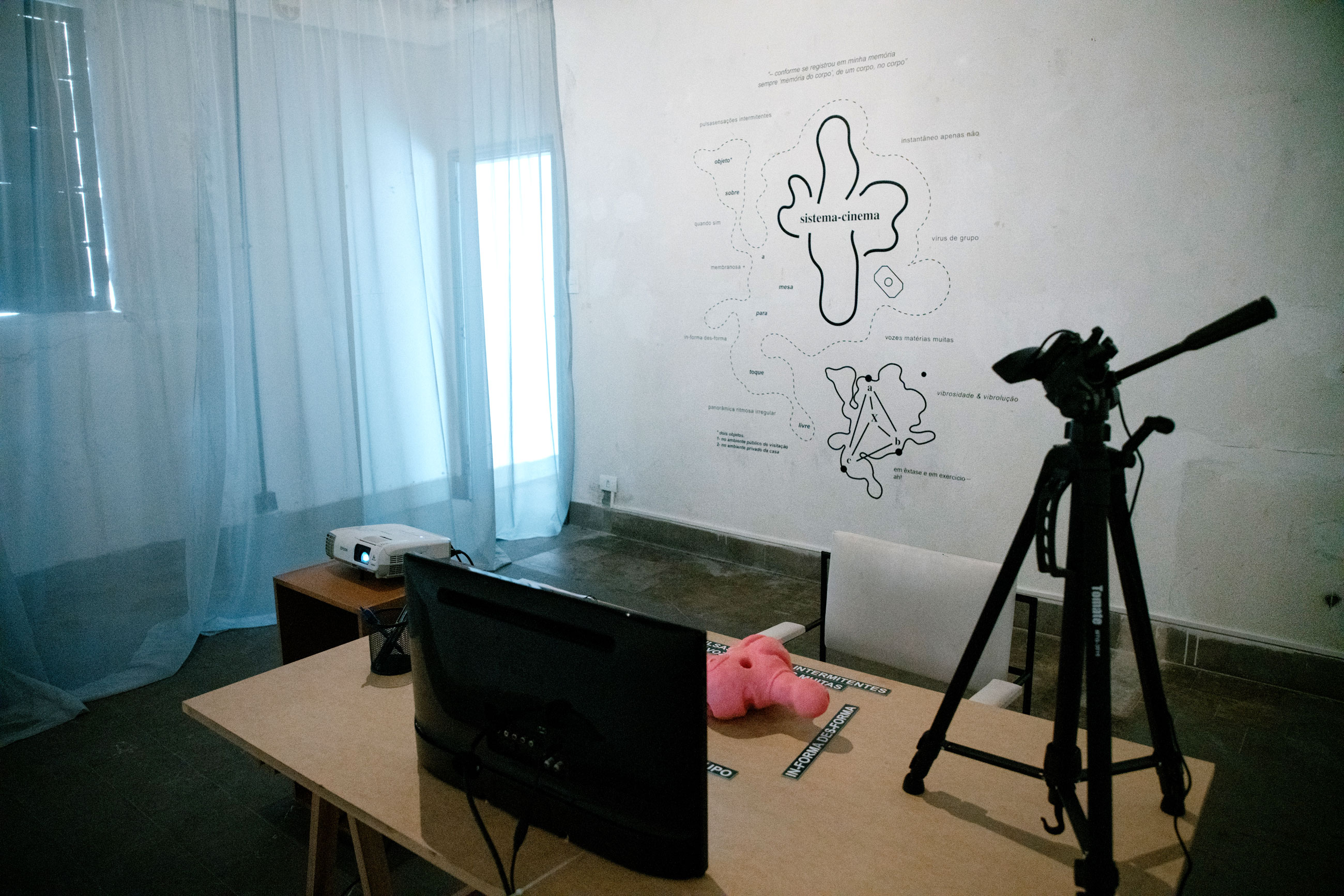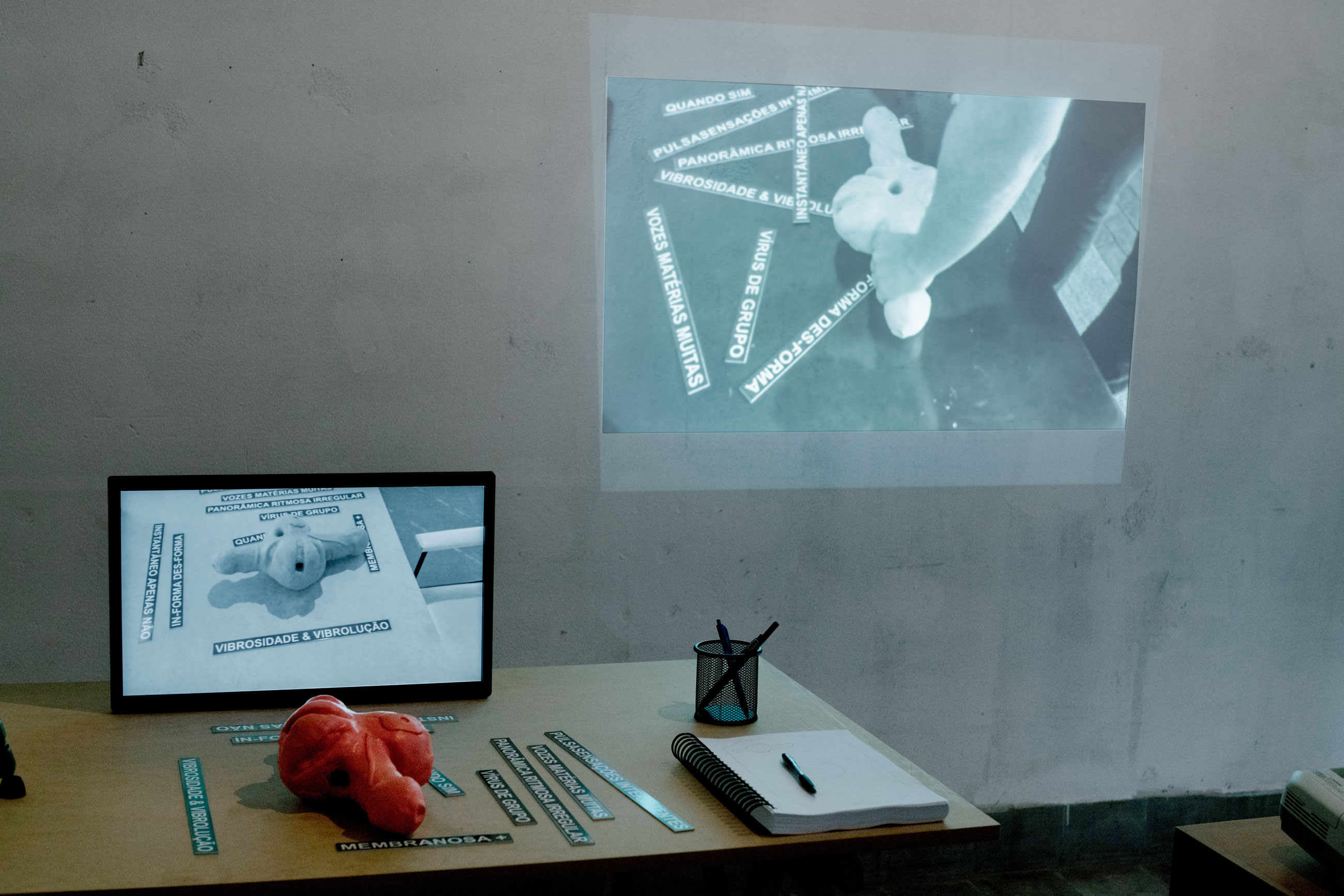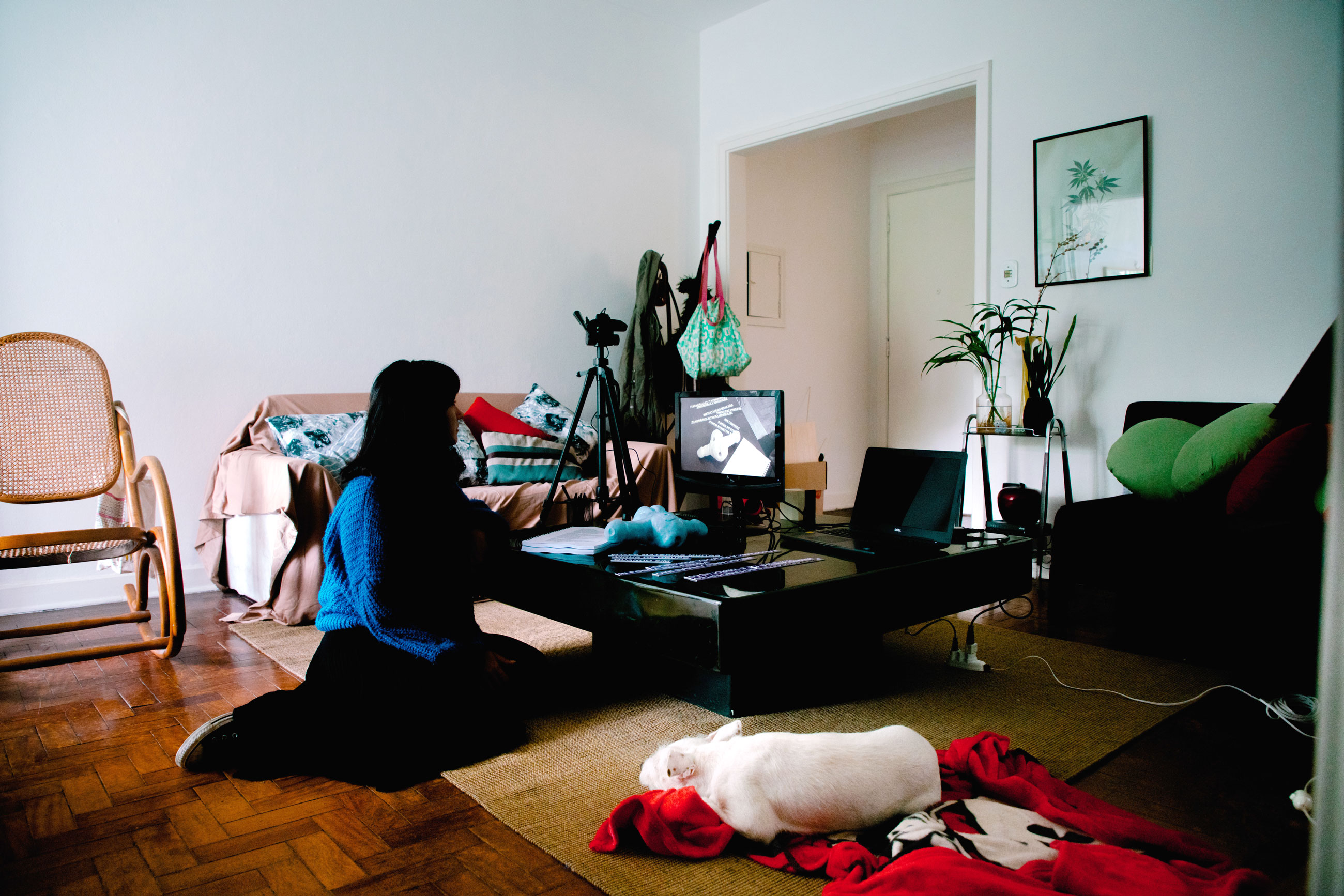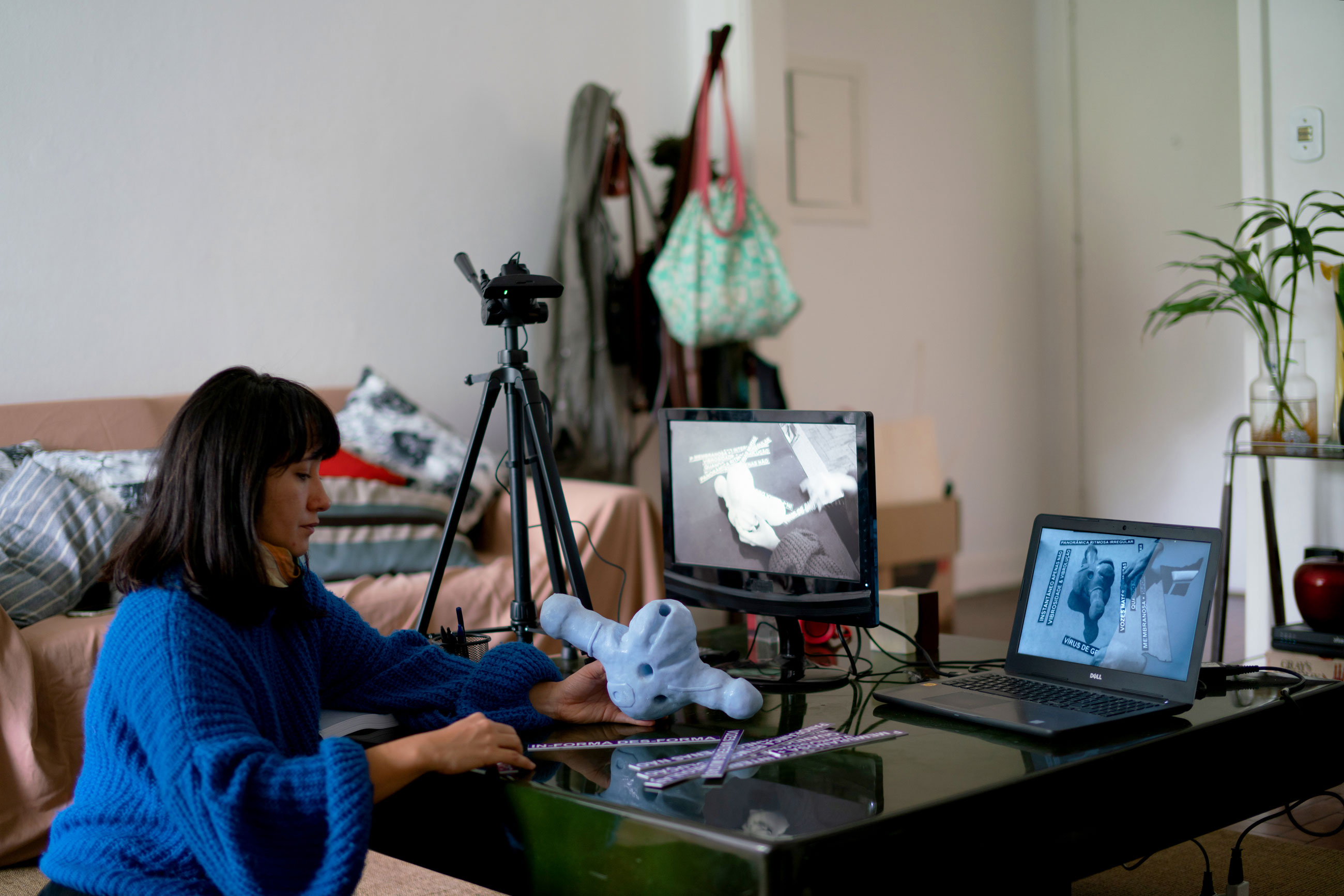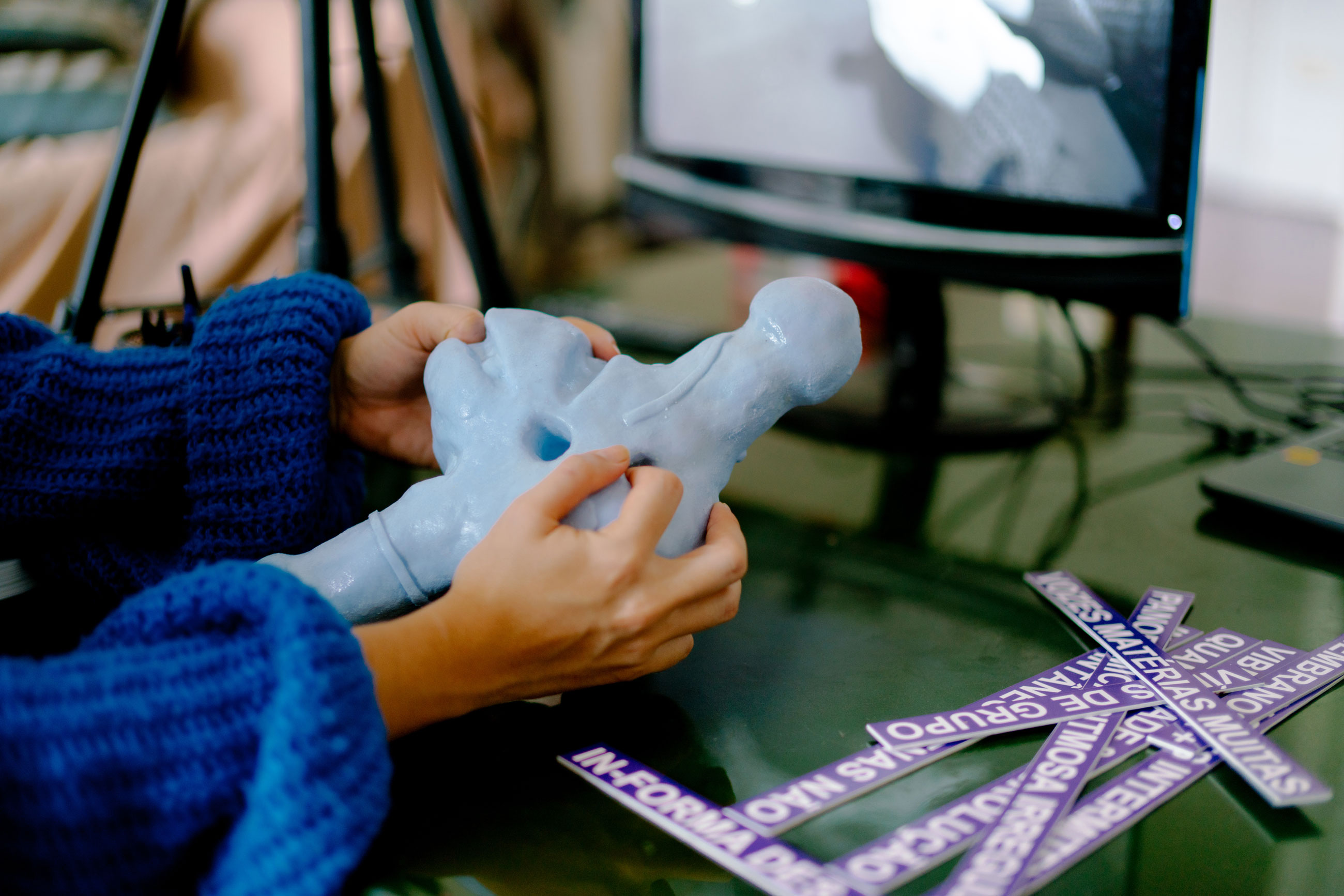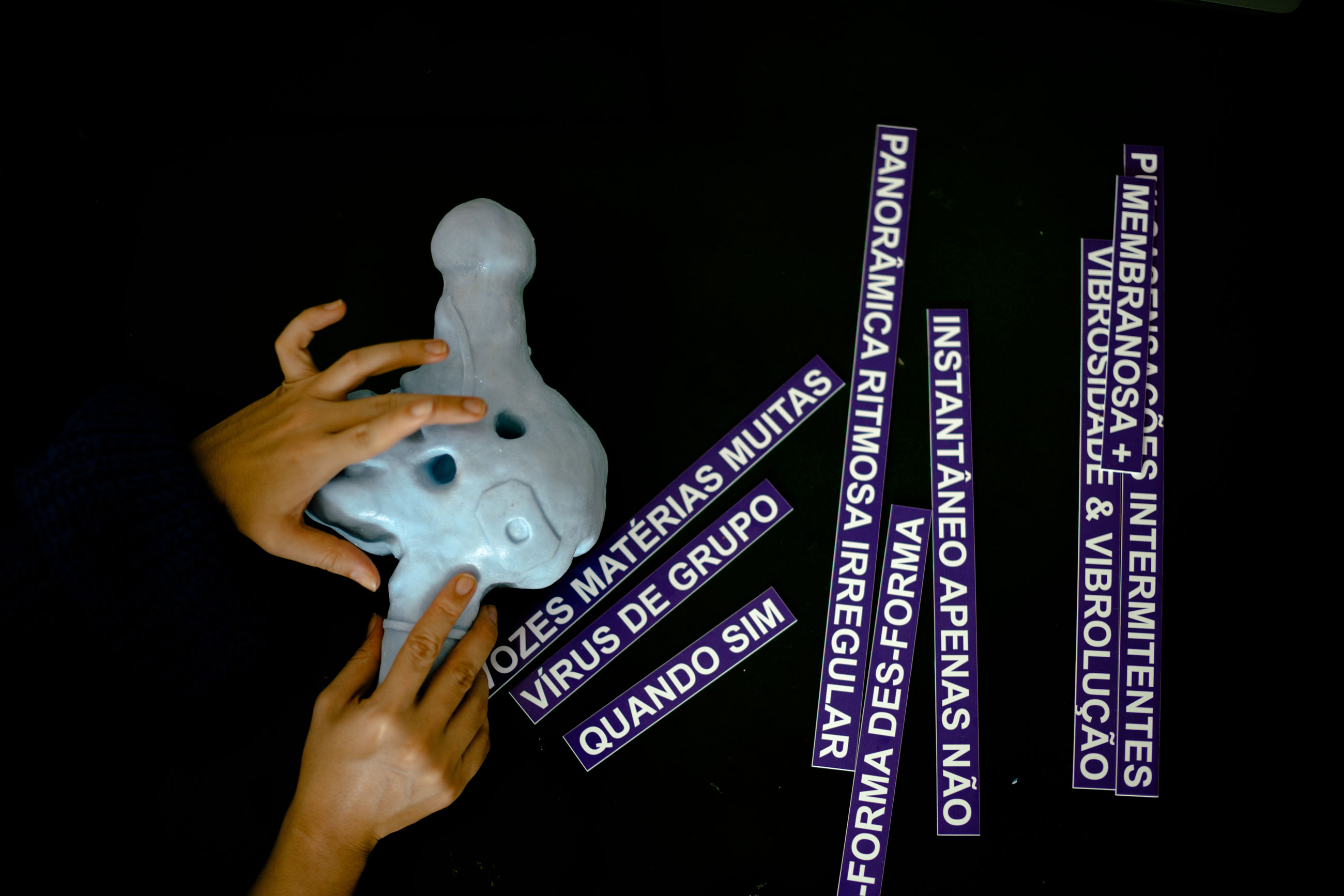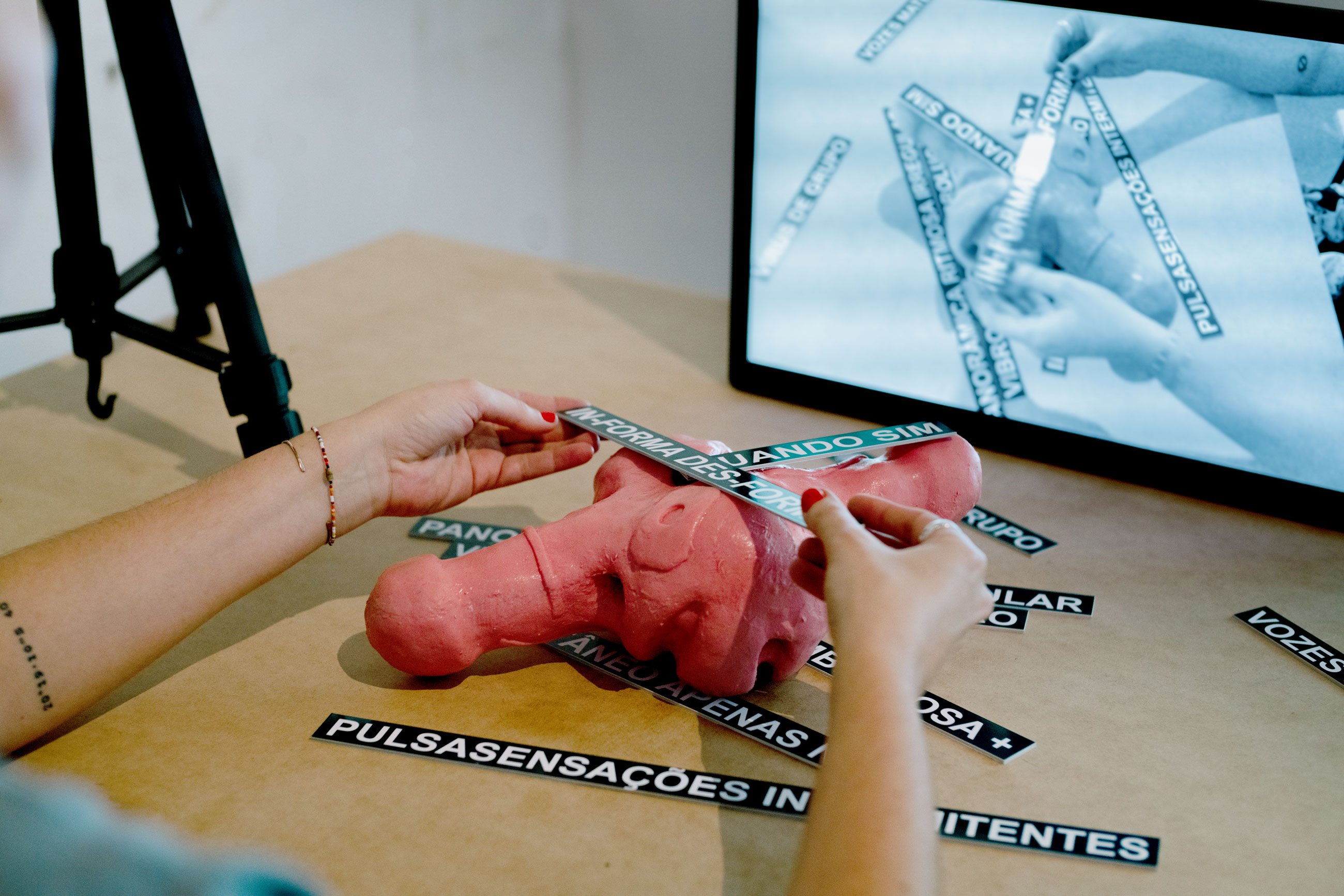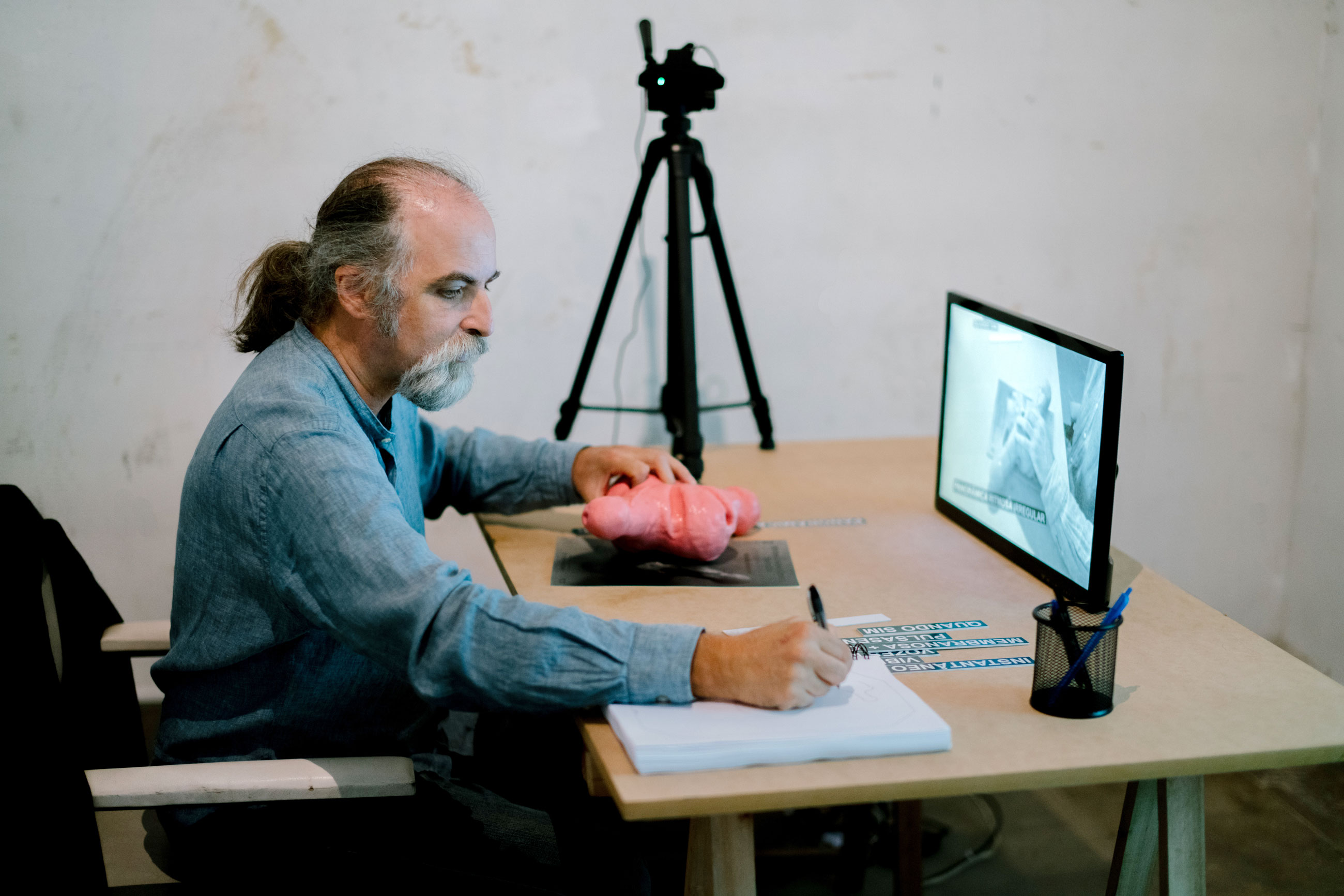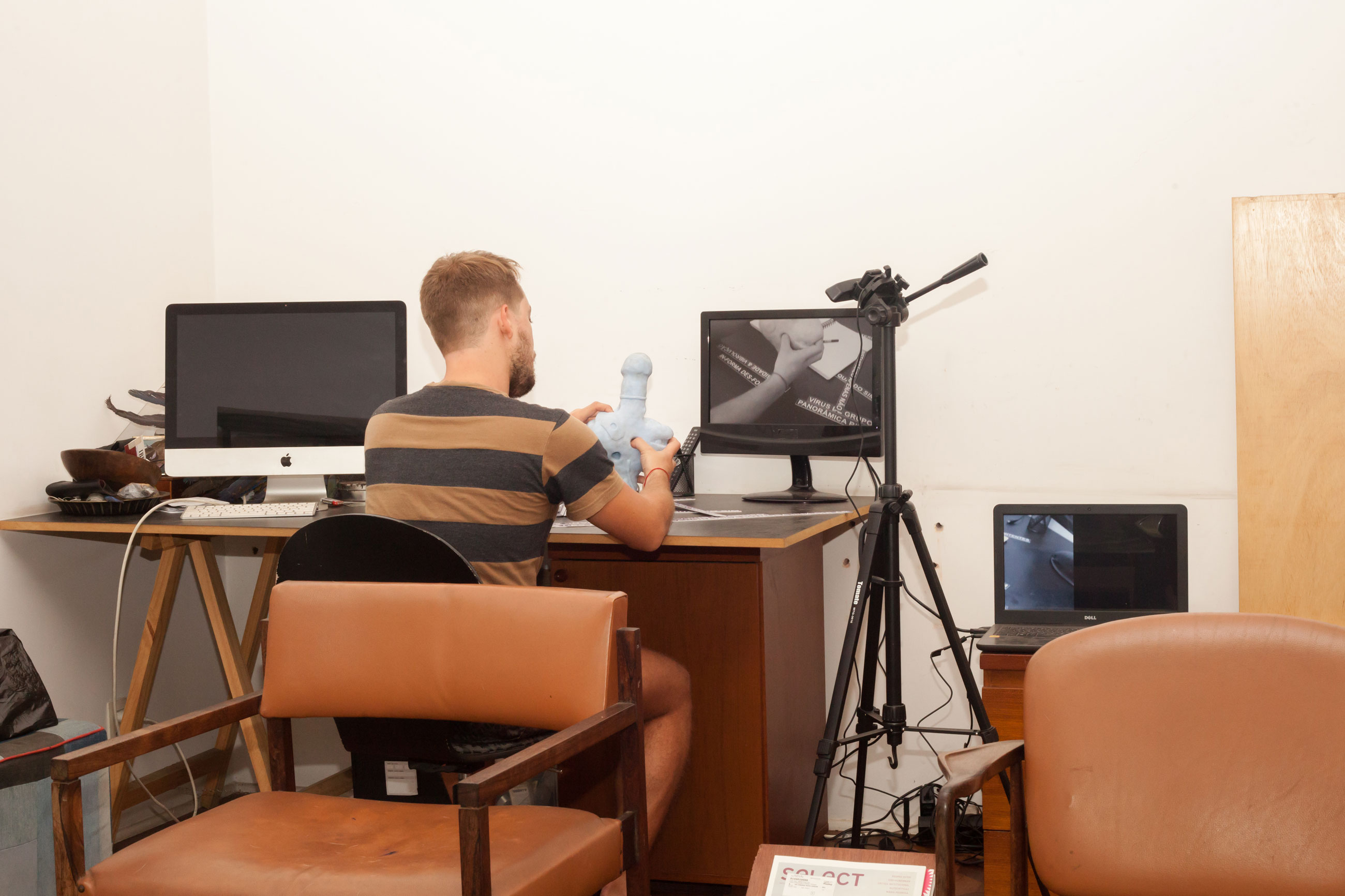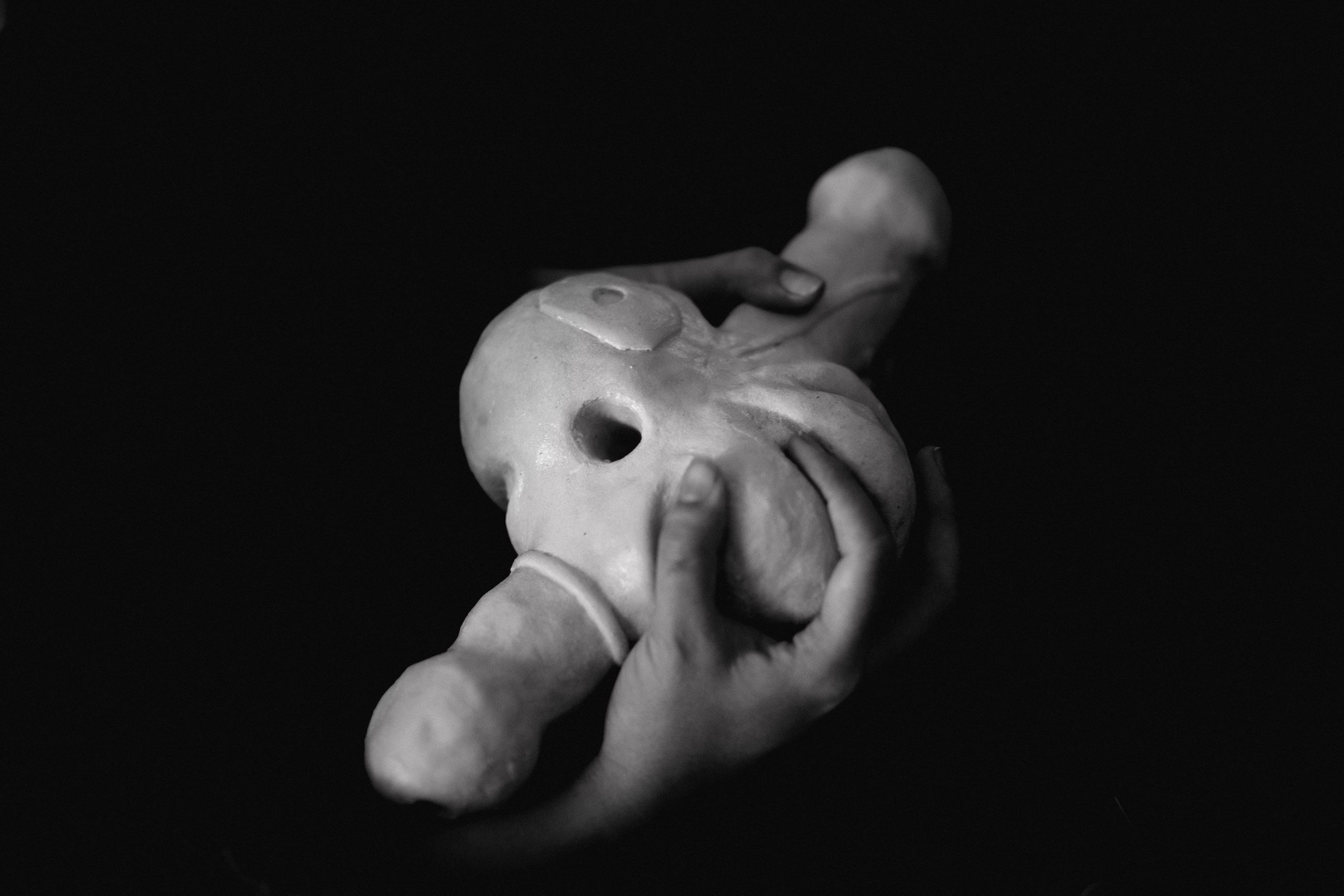system-cinema
in 1:1
In system-cinema: ecstasy & exercise Ricardo Basbaum correlated the exhibition space at Galeria Jaqueline Martins with a sequence of three domestic spaces in the neighborhood. A closed-circuit camera system simultaneously filmed the gallery’s exhibition room and a private dwelling, live-streaming the footage from one space to another. The cameras did not frame the entirety of these places and instead captured the same group of objects in both rooms. The two almost identical sets contained an item in silicone, printed sentences and a notebook, which the dwellers of the domestic space and the gallery visitors could freely manipulate and use.
The transmitted videos captured the users’ hands pressing, stroking and gripping these objects. The protrusions and crevasses of the silicone pieces echoed human body-parts, and its materiality incited its discovery through tactile interaction. The printed sentences incited their reorganization and recombination, which continuously generated new meanings and messages. The notebook encouraged users to write down their thoughts or scribbles in an ever-growing exquisite corpse. The presence of the cameras turned the handling of these objects into a performative act for a distant audience. This was simultaneously accompanied by the voyeuristic possibility of observing, in real time, the action happening in the other location. The video footage was periodically recorded and archived for later cinematic outcomes.
After residing for a period of time in one domestic space, the set of objects was sequentially taken to other private dwellings. The objects in the gallery remained unmoved. While the video streamed in the gallery allowed for an unrestricted observation of the domestic space, the possibility of visiting the private residences was negotiated case by case and subjected to the residents’ domestic routines.
1:1 #3
system-cinema: ecstasy & exercise
by Ricardo Basbaum (1961, Brazil)
08.12.2018 – 16.03.2019
Galeria Jaqueline Martins & three domestic spaces
Photos by Haroldo Saboia, courtesy of the artist & Galeria Jaqueline Martins
